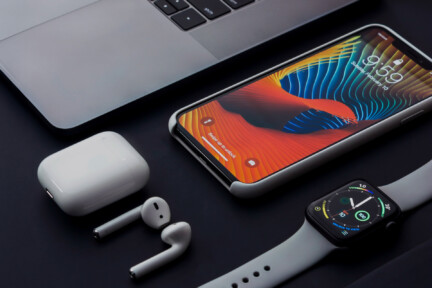It’s been more than a year since the COVID-19 pandemic has turned the entire world on its head, with most of us forced to change the way we work, behave and communicate with each other. There is virtually no industry that the year 2020 didn’t impact in one way or another, and the smartphone market is no exception.
Even though users were glued to their phones for most of 2020, the smartphone industry has taken a huge hit as a result of the outbreak. So what’s changed for the smartphone vendors so far, and how can they continue to adapt to the new reality under COVID-19? Let’s find out!
The smartphone market in 2020: an overview
The first major blow to the smartphone market came, expectedly, right at the end of the first quarter, with reports of a 13% decline in shipments and a 20% decrease in smartphone sales worldwide. The industry’s leaders found themselves facing the most painful blow in recent history, after a period of steady growth through most of 2019.
Suddenly, even though users became much more likely to spend more time on their digital devices, they were less keen to purchase new ones than before. The reasons are obvious enough: the uncertainty that COVID-19 has brought to our lives has made people more careful with their finances, and they became significantly less likely to spend on pricey items.
The shift in user needs
“My current phone works just fine, thank you” became a more frequently observed user viewpoint, and one that the industry had to learn to tackle. According to Kantar’s research across nine countries, a small percentage of consumers declared dumping the idea of getting themselves a new smartphone altogether, while an average of 30% wanted to postpone the purchase.
The most valuable information for the smartphone market, however, could have been the fact that around 15% of consumers declared they wanted to spend less on their new phone.

As Kantar notes in their report, the trend for users to opt for cheaper smartphones was only going to get stronger during COVID-19, and the industry should follow suit.
e-Commerce as the new norm
It goes without saying that online shopping has rapidly increased as a result of lockdowns. Buying smartphones online had already been an observable trend before COVID-19, but, for obvious reasons, it became more apparent when the virus outbreak hit.
So while smartphone sales have overall decreased in 2020, online smartphone purchases continued to increase throughout the course of the year. As such, vendors had to face not only customers that were less likely to buy, but also the fact that their clients were now operating online on a much larger scale.
Changes in operation
Aside from how the pandemic affected user behaviour and preferences, the industry also had to adapt its operations to the new reality under COVID-19. As a result of the massive slump in revenues, the rollout of 5G was inevitably slowed down, and smartphone producers were also affected by development delays and supply line disruptions.
While the first two quarters of 2020 were characterised by decreasing sales, the third quarter was where things started looking better for the smartphone market. The smartphone industry managed to recover enough by the end of 2020, with one of the biggest winners being Apple and their successful release of the iPhone 12.
Things do in fact look promising so far for 2021, but the question remains: how should those shifts in the market continue to be addressed?
The smartphone market online: how vendors can adapt
Seeing how users are more careful with their smartphone purchases, while simultaneously being keener to buy their devices online, there are some beneficial ways in which the industry make the shopping process easier for both parties.
Ensuring a positive customer experience
There have been various different ways to describe a customer’s journey, but the same steps generally repeat: it starts with the recognition of a need, progresses through research and evaluation of alternatives, ending with a purchase.

While before the pandemic it was common to go through those steps online and in a physical shop – for example, by doing research on the net, and then visiting the store and possibly testing out the product – now users are often constrained to buy devices without having seen them in the first place.
Thus, the goal for smartphone vendors should be to ensure that all the benefits of a physical shop are accounted for in the digital one. That could include, for example:
- An elaborate product presentation, both when it comes to visual as well as its specifications, listed in a clear, easy to comprehend way.
- Listing accessories recommended for each product in order to make users see the full offer, and make the experience more similar to a physical store.
- Live support on the site, which gives the customer the ability to consult their decision on the go, as they would in a physical store.
Having said that, mimicking a physical store isn’t all there is to a valuable customer experience online. What is most important is that after all, is that people end up making an informed choice, just as they would when shopping offline. The first step to achieving that should be rather obvious: it’s time to take a better look at the customers.
Forming the right message
Addressing user needs is essentially part of Sales 101, but when it comes to e-Commerce, it becomes a much detailed process. So what exactly are customers looking for when choosing a new smartphone?
When we look at the data accumulated over the years, the answer is not so simple, and the comparison between shopping preferences of Generation Y and Generation Z might tell us more about why that is.
Generation Y, i.e people born between the beginning of the 1980s all the way to the mid-1990s, tends to rely on network providers for research, visiting their websites in search of information.
On the other hand, Generation Z (the youngest consumers) needs visual engagement. They are more likely to rely on influencers, review videos, the brands’ social media accounts, or product premieres.
| Generation Y | Generation X |
|---|---|
| Tend to rely on network providers’ websites for research | Need visual engagement (social media, review videos etc.) |
| Find technical specifications important | Find new technologies important |
| The camera is the reason for purchase for 50% | The camera is the reason for purchase for 60% |
As seen above, according to Kantar’s data on the subject, Generation Z also finds smartphone cameras particularly important when making the choice, with as much as 60% of smartphone owners buying them for that reason, compared to 50% among Generation Y.
The older generation is also more likely to base their pick on technical specifications, such as processor speed, materials, etc., while the youngest consumers look for new technologies, such as face recognition or 5G capability, in their new device.
Site features that make it easier to choose
Smartphone vendors online should not only be aware of those differences but also account for the increasing part that visual encouragement plays when choosing the smartphone. As such, a product site should ideally have:
- Technical parameters listed, for those whose priority is the general capability of the device.
- Product reviews, which are an essential part of the research and a significant factor in ultimately making the decision.
- A video presentation in order to catch the eye of those more interested in the visual side of the smartphone (most likely younger people)
- Side by side product comparisons that enable customers to compare the devices with ease, rather than having to navigate between separate sites.
- A 360° view of the product, which gives the clients the ability to visually inspect the device as closely as they can in the comfort of their homes.
- A way to contact consultants – an important part of the process, especially for those accustomed to physical shops.
Ultimately, the goal is to make the customer’s choice as easy and fast as possible, while also giving those more used to physical shopping an experience that’s as similar to an offline store as possible.
Thus, smartphone vendors should do their best to address the unique user needs specific to online buyers, as the shift towards e-Commerce is, with all certainty, staying in the industry for good.
Are you an e-Commerce business wondering how you could improve your services? Choose our eCommerce development agency – our team of UX and UI designers and consultants will help you find the right way to boost your business!




